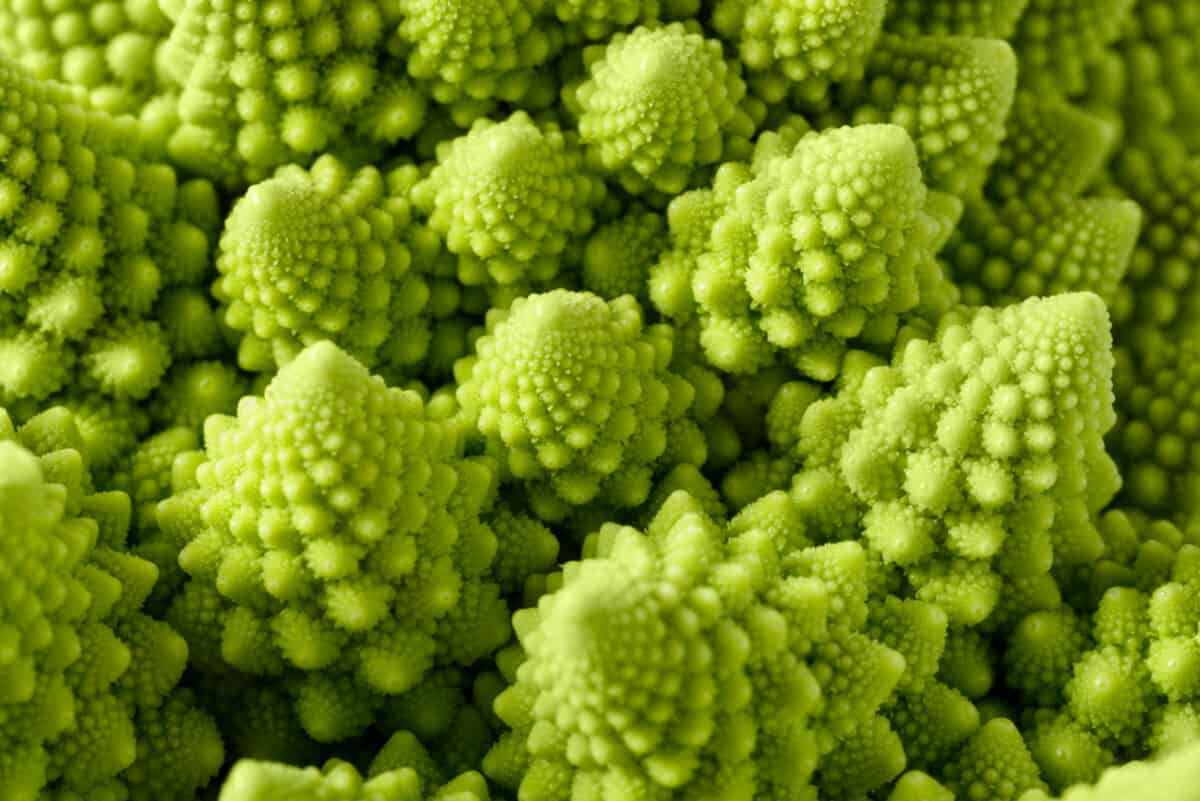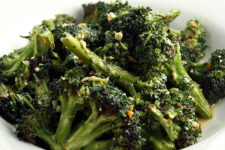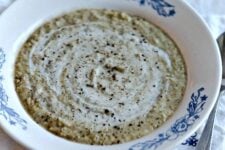This is not your average vegetable. You probably won’t see it in your standard, big-box grocery store’s produce section, but if you can find it via a health food store or local farmers market, this is one piece of produce you’ll definitely want to try. With a fantastical, spiral-like, vibrant green appearance, and a flavor profile similar to that of broccoli and cauliflower (it’s in the same family), Romanesco is a historically favorited veggie that deserves more time in the limelight.

What is Romanesco?
Romanesco, aka Brassica oleracea, also sometimes called Romanesco broccoli or Romanesque cauliflower, is related to both broccoli and cauliflower. The part of the plant we eat is technically a flower bud. Romanesco is known for its vibrant green color and fractal patterns that give the vegetable an almost trippy look.
Romanesco isn’t genetically modified, despite its unique and eye-catching appearance. In fact, Romanesco boasts a long history, with Italians growing the plant since the 1400s or even earlier.
Is Romanesco More Like Broccoli or Cauliflower?
Both flavor and texture-wise, Romanesco is more closely linked to cauliflower than it is to broccoli. However, there are still some key differences. Romanesco is somewhat softer when cooked than cauliflower, so it might not hold its texture as well in some recipes. Additionally, the flavor is milder and is described as “nutty.”

That said, so long as you keep these differences in mind, you can substitute Romanesco in many recipes that call for either broccoli or cauliflower.
When is Romanesco in Season?
Just like broccoli and cauliflower, you can easily grow Romanesco at home; it does best in cooler areas of the country.
If you specifically want to find it fresh, in the store or at a farmers market, you’ll want to keep your eyes peeled during the colder weather — fall to spring. If you buy your Romanesco at a large-ish store, you may also find that it’s shipped in, year-round, from other locales.
When picking the perfect head of Romanesco, look for the same things you might look for in a head of fresh cauliflower. Avoid any spotting and go for a head that has some heft.
When you get your Romanesco home, keep it in your fridge’s vegetable drawer.
How Do You Cook Romanesco?
As mentioned, you can use Romanesco in many of the recipes that call for broccoli or cauliflower, so long as you keep in mind that Romanesco’s texture may mean it can’t cook as long as cauliflower, or at the same high temperatures.

You can roast it, steam it, sautée it, put it in a casserole, pickle it, grill it, stir-fry it, add it to your soups or salads — you name it. This vegetable is incredibly versatile. Try swapping it out for the roasted cauliflower in these spicy tacos, or toss it in a Green Stiry Fry in place of (or alongside of) the broccoli.
However you take your Romanesco, you’ll enjoy a few different health benefits. A small, one-cup serving comes with only 40 calories, but 15% of your daily dietary fiber, and 7% of your daily recommended potassium.






